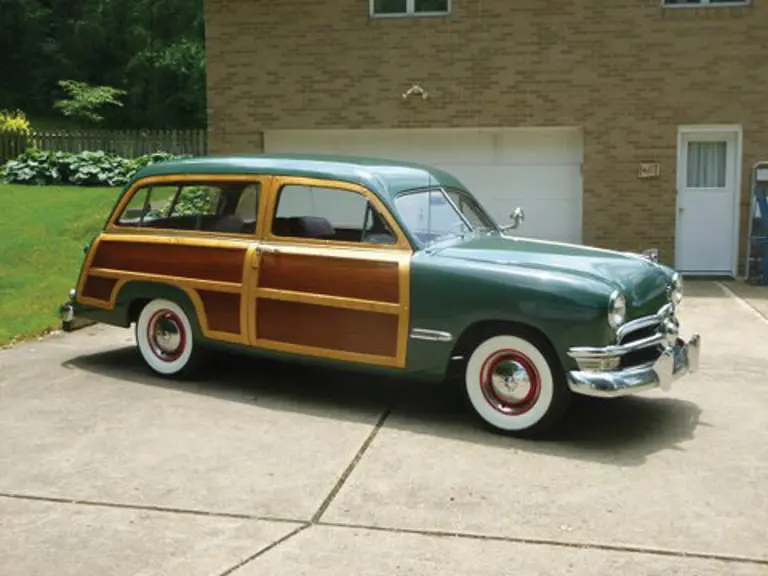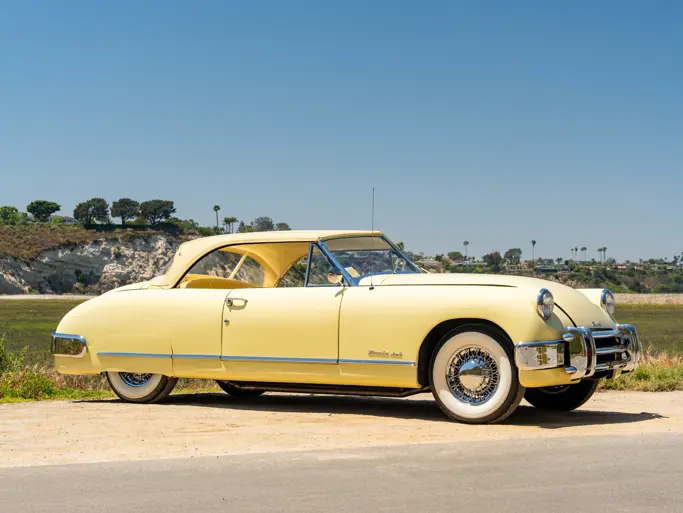While Ford’s all-new 1949 models were a big hit, station wagons posed a challenge. For many years the nation’s “wagonmaster,” Ford, was accustomed to out-producing all competing manufacturers of station wagons. From the 1940 models through to the 1948 models, the wagon bodies had been made in Ford plants in upper Michigan, with wood from Ford forests. However, traditional wagon bodies would not work with the new cars’ lines. Moreover, the competition was phasing out wood altogether. Ford had much image equity in the wood art form and was reluctant to go all-steel. A steel skeleton body was designed and skinned with mahogany plywood, trimmed in maple or birch. Laminating and heat-bonding techniques learned during the war while building gliders for the armed forces led to curved wood laminates. This construction not only allowed complex wood shapes, it reduced waste and was cheaper. Only two-door station wagons were built, and the Ford wagon came only in upscale custom trim, called “Custom Deluxe” in sales literature.
For 1950, Ford station wagons had real leather only on the driver’s seat (second and third seats were in vinyl) and received the automatic courtesy light, now standard on Custom Deluxe models. There were two versions of the station wagon in 1950. The early model carried over the window design, seats, and wood tailgate of the 1949 Custom. In May 1950, to keep pace with competitors’ new developments, a revised model was introduced. The second seat could be folded flat for load space, although the third seat still had to be removed. The side windows were changed so that only the forward pane slid open, and a steel stamping replaced the wood tailgate. The side panels, too, were now steel, with Di-Noc imitation woodgrain. Although the name did not appear on the cars, the new Ford wagons received a new title, “Country Squire,” which was used in various print ads of the period.
The new Ford station wagons were immediately popular. While the best year for Ford wagons had been 1947, with more than 16,000 built, 1949 easily beat the mark by exceeding 31,000, albeit with an extended, 17-month model year. With a considerably shorter season, 1950 did comparably well, with nearly 23,000 finding happy customers.
Presented in light green with the unmistakable wood trim elements that dominate the exterior, this Ford wagon has a maroon interior and features the iconic 239-cid, 100-hp V-8 flathead engine with a three-speed manual transmission with overdrive. Restored some years ago, the restoration still presents nicely. Of particular note is the wood, which has been replaced, was executed to high standards. Additional features include a rear-mounted covered spare, AM radio, spotlight and third row passenger seat. The two-door "Country Squire" is ready for payloads or playloads, just in time for your summer activities and touring with family and friends.



 | Auburn, Indiana
| Auburn, Indiana


